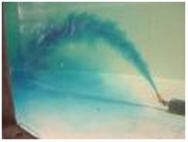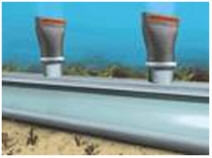Home | Literatures | SEA WATER DESALINATION
Literatures
SEA WATER DESALINATION
Brine disposal is a real environmental problem that should be considered and studied when installing a desalination plant.
In most cases, the easiest way to get rid of the important brine flow (70 to 55% of intake flow) is to discharge it in the sea via a brine outfall pipe.
Brine concentration varies from 50 to 75 g/L and has a much higher density than seawater and therefore tends to fall on the sea floor near the brine outfall outlet (plume effect), creating a very salty layer which can have negative impacts on the flora and the marine life and any related human activities.

Three concepts are identify as realistic brine mean of disposal:
MIXING
DIFFUSION
DILUTION
To avoid the plume effect, the brine outfall should end within a strong sea current to aid mixing the brine with seawater.
To enhance brine diffusion, another solution is to perforate the outfall pipe running on the seafloor and to add nozzle diffusers consisting of rubber check valves. A brine discharge pump must be foreseen to provide sufficient pressure.

Couresy of TIDEFLEX
When a maximal brine discharge limit is applied (e.g. France: 10% above seawater salinity), a solution is to dilute the brine with another water source upfront such as :
- Natural fresh water stream (river) if the plant is located close to a delta
- Waste water effluent stream discharged to the sea
- Seawater itself coming from the intake pump, which requires a larger intake capacity.